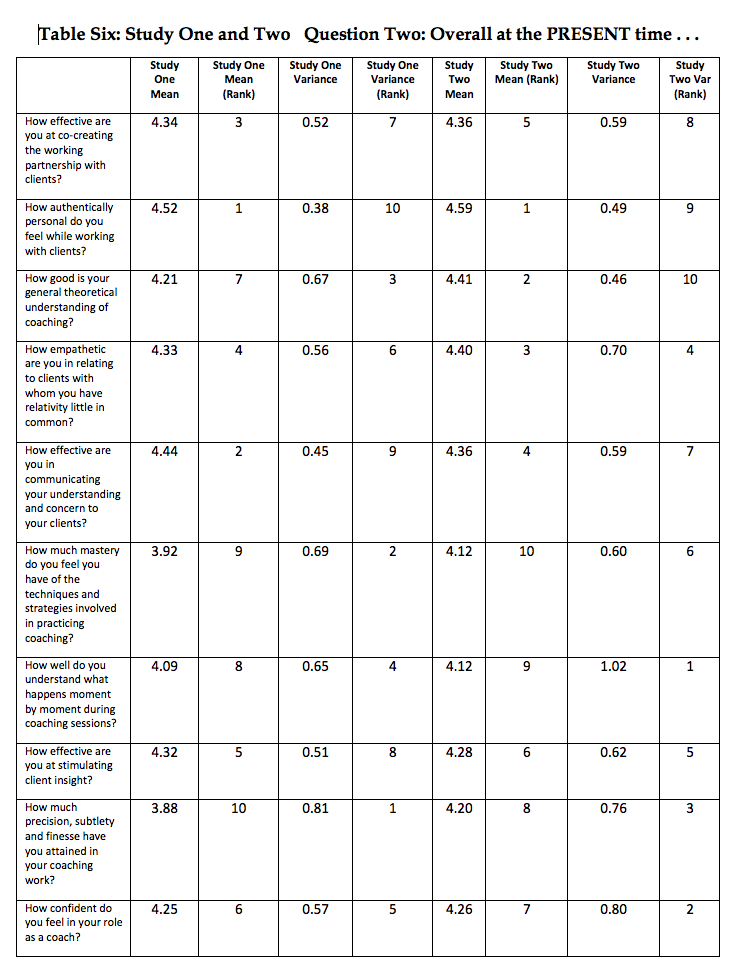
We now provide scores and rankings for the second question (Table Six):

Discussion
In discussing the results of these two surveys we first compare the two surveys and then turn to the overall positive attitude displayed by respondents to both surveys. We focus more specifically in our subsequent discussion on both the “soft side” of coaching (the interpersonal relationships established between coach and client) and the “hard side” of coaching (tactics and strategies). We conclude by proposing a bridge between the soft and hard sides through use of subtle coaching.
Comparison between Two Surveys
There is often a high level of concurrence as we look at the means scores for the two studies. Most of the means are quite similar and the rank order of means for both studies is similar. Even the variance scores are similar with regard to both amount of variance in responses to a specific item and the rank order of the variance scores for each item.
There are a few notable differences, however, between the two surveys — the most dramatic being the item referring to theoretical understanding. As we will see when turning to the most controversial and lowest ranked items, as compared with the least controversial and highest ranked items, there is a fair amount of low rating and high variance of items related to the so-called “hard” skills and knowledge of coaching (strategy, tactics, theory), whereas items related to the so-called “soft” skills and knowledge of coaching (authenticity, presence, partnership, communication, etc.) tend to yield high scores and concurrence (low variance) among the respondents.
Download Article
















